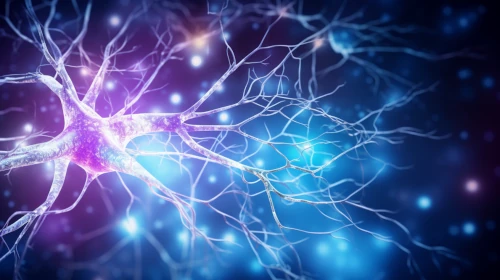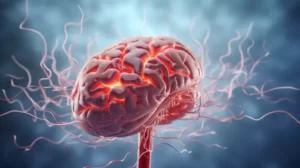Scientists have uncovered an astonishing fact: the human brain begins to show signs of Alzheimer’s up to 20 years before the first symptoms emerge. This revelation is nothing short of a breakthrough and has the potential to revolutionize the way we approach one of the most dreaded diseases of our time.
The fact that our brain holds these early whispers of Alzheimer’s, much before memory lapses or cognitive decline becomes apparent, is not just an interesting tidbit—it’s a beacon of hope. It opens up a crucial window of opportunity for early intervention that could change the trajectory of the disease for millions.
Alzheimer’s disease, a condition that affects some 47 million people worldwide, is the most common cause of dementia. It’s a progressive brain disorder that slowly erodes memory and cognitive skills, ultimately stripping away the ability to carry out the simplest tasks. For years, the medical community believed that by the time symptoms became evident, the battle against Alzheimer’s was largely lost. But brain imaging technologies are now challenging that notion.
Advances in Magnetic Resonance Imaging (MRI), Positron Emission Tomography (PET), and other neuroimaging techniques have unveiled new possibilities. They allow us to peer into the brain with incredible precision, revealing the subtle changes that forecast the onset of Alzheimer’s. These technologies showcase protein accumulations known as beta-amyloid plaques and tau tangles, hallmarks of the disease, long before a patient would notice any symptoms.
This is of great significance because we now understand that Alzheimer’s is a gradual process, and cognitive decline is the end result of decades of brain changes. The disease is like a slow-burning fire that smolders unseen before eventually bursting into flames. Current research is, therefore, targeting the smolder. Efforts are focused on detecting and quenching these early sparks in order to prevent the fire— to halt the disease before it manifests.
One such study, the landmark A4 (Anti-Amyloid Treatment in Asymptomatic Alzheimer’s) study, tracks individuals who have evidence of these brain changes but no clinical symptoms. By using PET scans to identify people with significant amyloid buildup, scientists can evaluate whether anti-amyloid drugs can help to delay or prevent the onset of symptoms.
But early detection isn’t just about big pharma and clinical trials—it’s also deeply personal. For individuals, it’s about making proactive lifestyle changes. Diet, exercise, and mental stimulation—all cornerstones of a healthy life—are showing promise in preserving cognitive functions. They aren’t foolproof shields against Alzheimer’s, but they’re part of an empowering strategy that is within everyone’s reach.
For those concerned about Alzheimer’s, it’s practical to consider regular check-ups that go beyond blood pressure and cholesterol levels. Just as mammograms are scheduled for breast cancer or colonoscopies for colon cancer, brain health check-ups might one day be the norm for cognitive diseases.
Adopting a brain-healthy life involves several modifications and wellness checks:
1. Keep engaged in learning new skills, which keeps the brain active and may build cognitive reserve.
2. Maintain a heart-healthy diet rich in omega-3 fats, fruits, vegetables, and whole grains—what benefits the heart also benefits the brain.
3. Exercise regularly to boost blood flow to the brain and to reduce the risk of other conditions that might contribute to cognitive decline like diabetes and cardiovascular disease.
4. Get quality sleep, as sleep disturbances can undermine brain health.
5. Manage stress effectively through mindfulness or meditation, which can reduce inflammation and support cognitive functions.
Coupled with these lifestyle choices, emerging medications and treatment strategies could offer a better defense against Alzheimer’s. Current research includes not only anti-amyloid therapy but also drugs aimed at other disease mechanisms. Importantly, treatments that can reduce inflammation or support neuron health are on the horizon.
Notably, brain imaging isn’t without its controversies. One of the most significant concerns is the ethical dilemma it poses. What does one do with the knowledge that they are on the path to Alzheimer’s, potentially decades before symptoms arrive? There are emotional and psychological implications that come with such revelation. Moreover, health insurance and employment discrimination issues could also arise.
So, while a golden era of early detection beckons, it’s accompanied by complex questions that society must grapple with. Increased awareness, better policy measures, and the fostering of a compassionate environment for those at risk are essential parallel developments we must strive for.
In summary, brain imaging as an early detector for Alzheimer’s shines a light on preventive avenues and heralds a shift from reactive to proactive management of the disease. From groundbreaking research to everyday health habits, we are better equipped than ever to face the threat of Alzheimer’s head-on. While there’s no one-size-fits-all solution or cure, employing a combination of advanced technology, medical innovation, and lifestyle adjustments offers the best chance to keep our brains healthy for as long as possible.
In the journey of life, where memories are the priceless cargo we carry, safeguarding the vessel that holds them—the brain—becomes the most paramount quest we embark upon. Let’s make it a collective voyage, for every mind is a universe in itself, full of stories, dreams, and wisdom deserving of protection.



